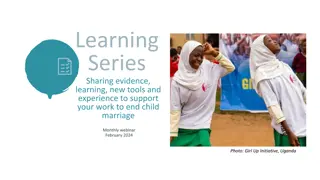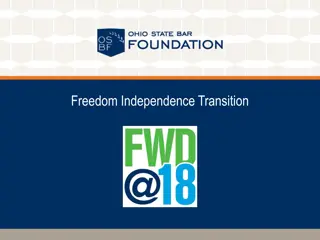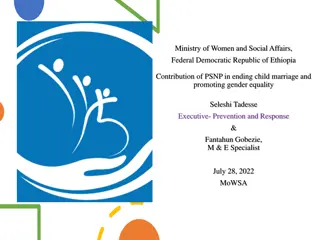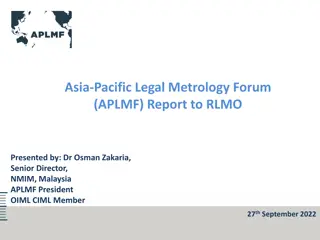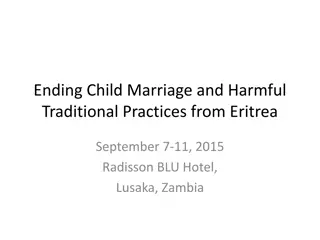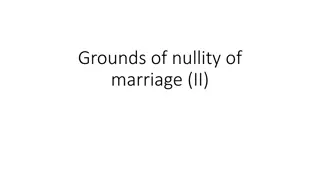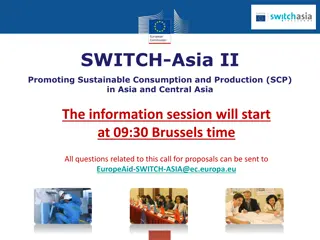Insights on Child Marriage in South Asia: Evidence and Recommendations
This evidence review explores the trends, drivers, and impacts of child marriage in South Asia. It delves into the decreasing rates among girls in countries like Bangladesh, India, and Nepal, while highlighting persistent gaps in knowledge. The study identifies economic factors, social norms, and educational shortcomings as key drivers of this harmful practice. Recommendations include addressing macro-economic changes, empowering girls through education, and challenging deeply ingrained gender norms to combat child marriage.
Download Presentation

Please find below an Image/Link to download the presentation.
The content on the website is provided AS IS for your information and personal use only. It may not be sold, licensed, or shared on other websites without obtaining consent from the author.If you encounter any issues during the download, it is possible that the publisher has removed the file from their server.
You are allowed to download the files provided on this website for personal or commercial use, subject to the condition that they are used lawfully. All files are the property of their respective owners.
The content on the website is provided AS IS for your information and personal use only. It may not be sold, licensed, or shared on other websites without obtaining consent from the author.
E N D
Presentation Transcript
Evidence Review of Child Marriage in South Asia UNICEF ROSA/UNFPA APRO Joint Meeting August 21, 2019 Erin K. Fletcher, PhD with Taveeshi Gupta, PhD
Outline Background and Impetus for the Study Trends and Data New Evidence Measurement and Evaluation Tools Persistent Gaps in Knowledge and Evidence Recommendations
Background and Impetus for the Study Child marriage continues to be an area of interest for researchers and international organizations 2016 UNICEF/UNFPA Expert Group Meeting Rapidly expanding evidence base Renewed need to examine new findings for South Asia
Trends and Data Rates of child marriage among girls are decreasing across South Asia Bangladesh, Bhutan, India, Maldives, Nepal, and Pakistan Data quality and availability continue to limit analysis of child marriage trends Boys experiences Sri Lanka, Afghanistan Within-country heterogeneity is high and better documented Some regions still showing increases in child marriage Select islands in Maldives Rajasthan, Maharasthra, Uttar Pradesh
Drivers of Child Marriage Economic Situation and Shocks Lack of resources sometimes correlated with child marriage Child marriage as status symbol for higher-resourced families Shocks & migration important and understudied contributor to child marriage (e.g., climate emergencies) Macro-economic change impacts the reduction of child marriage if the norm is weaker Education Insufficient causal evidence on education Benefits of increased literacy, education may not accrue to current generation
Drivers of Child Marriage: Norms Persistent Gender Norms and Social Norms Patriarchal views on puberty Restriction of girls mobility Strongly held perceptions of community norms may counteract information campaigns (knowledge of harmful effects may not be sufficient Evolving Gender Norms and Social Norms Girls education and aspirations Shifting gender roles and decreasing marital age gap Improving labour force participation rates (but risk of child labour) contexts where norms are in flux are most amenable to changing child marriage practices.
Linkages to Other Sectors Sexual and Reproductive Health Regionally, fertility rates are falling Marital fertility is still high Comprehensive sexual education and reproductive health services still needed to support child brides Gender-based violence Heterogeneity of risk of spousal violence among child brides is high Causal linkages are not supported by evidence Unmarried girls at high risk of GBV
Interventions to Prevent Child Marriage Evidence on empowering girls (information, skills, support networks) is mixed Largely positive, but narrow focus not sufficient to move the needle Information and awareness building for men, families, boys & gatekeepers Promising, but needs more work Norms change takes time and is intensive Income Transfers Evidence supports increase in secondary school completion and child marriage delay High potential for unintended consequences and merits more research Mixed evidence as to whether income transfers contribute to ending child marriage
Legal and Policy Frameworks National Action Plans and Legal Frameworks to directly or indirectly address child marriage are evolving and being put in place Legal and policy coherence is low Distinction between own-choice marriages and forced marriages fuzzy in most places Enforcement remains low Effects of laws and NAPs unclear Is lack of efficacy related monetary resources or other barriers?
Measurement and Evaluation Tools Expansion of RCTs and quasi-experimental work to understand drivers Often address narrow questions and data sharing is low, undermining confidence Some bright spots, but RCTs remain expensive and difficult to implement Expansion of disaggregated data important for descriptive work to understand trends
Persistent Gaps in Research Geographic focus is strongly on Nepal, Bangladesh, and India Low data quality and availability in Maldives, Bhutan, Sri Lanka, Afghanistan Child grooms National Action Plans and associated budgets
Recommendations And Next Steps
Future Research: Systems View Child marriage is not [merely] a problem of poverty that can be easily fixed but rather a cultural and social institution that is deeply embedded in communities, norms, and cultural and religious frameworks and deserving of a careful view Feedback Loops & Externalities Efficacy of single- outcome programming Social and Gender Norms Communications programming largely ineffective How to address? Legal Reviews Context & Within-country estimates Urbanization Marginalized Groups -Gupta and Fletcher, 2019
Questions? Thank you!
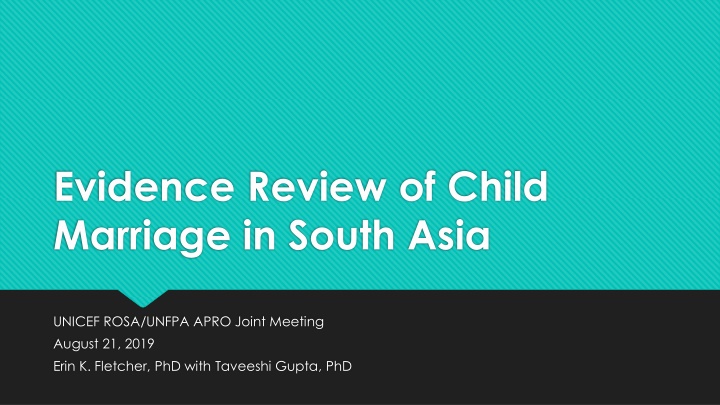

![READ⚡[PDF]✔ Emerging Space Powers: The New Space Programs of Asia, the Middle Ea](/thumb/21554/read-pdf-emerging-space-powers-the-new-space-programs-of-asia-the-middle-ea.jpg)
